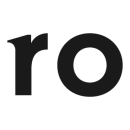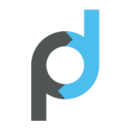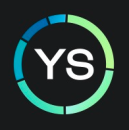For leaders wanting to drive collaboration between product and engineering, the foundation needs to be laid before development even begins through activities like joint roadmap planning, business strategy sessions and spontaneous brainstorms.
But now that many tech teams are fully remote, teamwork is looking a little different these days. For one, tech leaders need to be more diligent when it comes to scheduling collaborative events, since a spontaneous watercooler brainstorm is no longer a possibility.
Jess Prager, a vice president of product in NYC tech, said implementing digital “office hours” is how telehealth company Ro holds brainstorming sessions for product and engineering. Employees are encouraged to chat and bounce ideas off each other without a formal agenda.
Ensuring these pop-up events are productive, however, requires documentation. Prager said written follow-up is key to maintaining alignment and shared context across the broader team. Sometimes, she said these meetings feel just as — if not more so — invigorating as the formerly in-person ones.
“Our product design team has done a phenomenal job creating templates for ideation and brainstorms including digital sticky notes and voting stickers, truly reimagining the experience for our teams,” Prager said.
While freestyle brainstorming sessions can still be held virtually, the following product and engineering professionals said it’s important for tech leaders to establish when is a good time for casual banter, and when is the best time for heads-down work; an active Slack status doesn’t necessarily mean a green light for GIF-sending.
Implementing new rules around Slack etiquette and calendar holds lets team members know how to navigate their new environment, while still leaving room for fun.
With a fully remote team, Software Engineer Julia Wu said communication has almost been easier now that her team has been forced to write more digital memos, announcements, design documents and engineering specs. Clear and concise instructions leave little room for miscommunication between product and engineering at corporate fintech company Brex.
What tools have been most impactful for helping you recreate activities like whiteboarding or sprint planning in a remote setting?
Even when we did have whiteboards, we always had to capture the outcomes of that whiteboarding session in a document for later reference. Nowadays, we are going straight to the document, but with more revisions. One person can start a design, add some initial thoughts, and share that draft with the larger team. Next, people can comment on it and have a discussion on Zoom. Our engineering organization also has weekly design review forums, which have been extremely conducive to discussions around architecture designs.
How are your product and engineering teams communicating differently now that everyone is remote, and why?
Earlier this year, we made an intentional effort to increase written communication to improve our decision-making as a company. Now that everyone is remote, we were all pushed to exercise this muscle frequently for memos, announcements, design documents and engineering specs. Writing encourages the author to communicate thoughts concisely. We’ve also benefited from the ability to have “asynchronous” discussions within the document.
For example, every team at Brex recently had their Q2 reflection and Q3 planning. Even though this involves meetings, the final product of the retrospective and plan is a document.
The collaboration capabilities of Google Docs has been very useful to us. The ability to comment on Docs, tag teammates for action items and track updates has significantly helped our productivity. We also continue to do our daily stand-ups on Zoom and leverage Slack for exchanging updates and asking questions.
We made an intentional effort to increase written communication to improve our decision-making.”
What’s the most important practice your team follows to ensure successful remote collaboration between your product and engineering teams?
Over-communicate. Though memos and Slack represent a big chunk of Brex’s internal communication, we also leverage email for sharing important decisions across stakeholders.
Another platform that helps with visibility is Threads. We’ve been using the platform since Brex’s earliest days, and I personally have a habit of always clearing my Threads notifications. We try to make good use of Threads spaces to keep information well-categorized. This not only helps with collaboration between product and engineering but also our communication with business development.
Jess Prager, a vice president of product, said “office hour” meetings are scheduled digital spaces for brainstorming at telehealth company Ro. Team members can share potential solutions and bounce ideas off one another without a formal agenda. Even though the meetings are optional, there is a high level of participation.
What tools have been most impactful for helping you recreate activities like whiteboarding or sprint planning in a remote setting?
Our teams have deliberately maintained a casual pop-in culture to run ideas by each other. Although we can no longer drop by one another’s desks, we can just as easily hop on a 3-minute Slack call. These ad-hoc conversations have been essential for day-to-day problem-solving. We recognize that written follow-up is key to maintaining alignment and shared context across the broader team.
For remote brainstorming and design sprints, we’ve had a lot of success using Figma, where all participants can contribute in real time. Our product design team has done a phenomenal job creating templates for ideation and brainstorms including digital sticky notes and voting stickers, truly reimagining the experience for our teams. With these new solutions in place, we recently held a successful multi-day product vision workshop that included participants from the tech org, cross-functional teams and our CEO.
We have invested in a team culture and working style that supports a distributed team.”
How are your product and engineering teams communicating differently now that everyone is remote, and why?
We have invested in a team culture and working style that supports a distributed team because our engineers are spread across many different locations. Due to this, our squads of product, design and engineering were well-positioned to work productively as a fully remote team.
The two challenges have been maintaining healthy collaboration and communication between the different squads, as well as between the squads and their stakeholders. To solve this, we set aside dedicated time each week for the squads to work through a shared agenda of dependencies and problems to be addressed. And, to ensure communication with stakeholders, we invited key cross-functional stakeholders to regularly attend our virtual stand-ups to give real-time feedback.
What’s the most important practice your team follows to ensure successful remote collaboration between your product and engineering teams?
“Office hours” are a recurring meeting that we host 2-3 days a week immediately following the squad’s regular stand-up. It has empowered our teams to share their work early and often, which is core to how we build products at Ro. Unlike a typical meeting, these office hours create time and space to bounce ideas off each other, problem-solve or simply to share context on upcoming work. Everyone on the squad is encouraged to attend, and most do.
At smart buildings company Prescriptive Data, Vice President of Product Shahar Peleg said collaborative document editing tools have been invaluable to collaboration between product and engineering while remote. So has over-communication.
What tools have been most impactful for helping you recreate activities like whiteboarding or sprint planning in a remote setting?
We have been using product management software development tools even before the engineering and product teams transitioned to being remote. We became more diligent in using the tools and making sure that they are always up to date and contain the necessary information. As for making brainstorming and whiteboarding sessions more efficient during remote work, we put an emphasis on preparing and sharing drafts of the ideas before the sessions for people to better prepare and provide feedback. During the meetings, we use collaborative document editing tools as well as virtual whiteboards to get the ideas across.
There is no such thing as over-communication.”
How are your product and engineering teams communicating differently now that everyone is remote, and why?
Product and engineering teams have product management ceremonies and meetings on an ongoing basis such as sprint planning, daily stand-ups and sprint retrospectives. With everyone being remote, these are all conducted virtually. Before being remote, a product manager and an engineer could have a quick informal chat to triage an issue and go out to implement. Currently, we are relying more on written communication within the various product management software development tools that we are using to provide better visibility to all the team as well as future traceability.
What’s the most important practice your team follows to ensure successful remote collaboration between your product and engineering teams?
There is no such thing as over-communication. With the teams being remote, it is important that everyone is aligned and on the same page. Sharp, precise and ongoing communication is key to achieve this. We are making great progress and getting key, time-sensitive initiatives done and delivered to our customers.
Transitioning to a fully remote team is seamless when half the team is already remote, Director of Engineering Alex Kharlamov said.
Tools like Clubhouse, Figma, Google Docs and Nuclino are used for engineers and members of the product team to collaborate at investment platform Yieldstreet, while virtual hangouts over Zoom and Donut help replicate office culture.
What tools have been most impactful for helping you recreate activities like whiteboarding or sprint planning in a remote setting?
We’ve been pretty fortunate because our product, design, data and engineering teams were half-remote before the COVID-19 outbreak. We have folks in New York City, Brazil, Argentina, Malta and a senior product designer in Austin, so our transition into a one hundred percent remote work environment was quite seamless.
The central point of collaboration is Clubhouse. It’s super fast, minimalistic, and doesn’t have all the bloat of Jira. Figma has also been invaluable for us. Our product managers, designers and engineers are able to share the work in progress and get rapid feedback from the team. A combination of Google Docs and Nuclino has been very helpful for collaborating on documentation, especially for things like epic templates for major features.
For our daily stand-ups, some of our teams do a video call via Google Hangouts, while others do Slack-based stand-ups. Google Hangouts works well for sprint planning. And for remote retrospectives, FunRetro has been very useful for us.
How are your product and engineering teams communicating differently now that everyone is remote, and why?
Most of our “official” communication already took place remotely prior to the outbreak via a combination of Slack, Google Hangouts and Zoom. Our biggest challenge has been replacing the informal communication and team-building that happens during breaks and after work. It’s been especially hard for new team members that joined after we began working from home because they haven’t met their teammates in person yet. And for most of us, our personal lives have been affected with everything else going on in the world as well.
For this reason, we have been focusing on doing as many remote team-building activities as possible. Most teams do regular virtual team lunches, drinks or “get togethers.” The key to recreating an informal atmosphere is to keep the groups small. We also use the Donut Slack extension to randomly pair people for informal coffee chats, which is fantastic for getting to know someone from a team that you may not interact with on a regular basis.
All of this has really helped us bring the team closer together, while staying remote. In June, we executed our first ever Yieldstreet Hackathon with teams collaborating on innovative projects in a fully remote environment. It was a major success and helped inspire and energize our entire company.
Remote collaboration has its challenges, but it is possible.”
What’s the most important practice your team follows to ensure successful remote collaboration between your product and engineering teams?
Relying solely on remote communication is tough in general, and the outbreak makes it even tougher. After a few months of lockdown, some folks may be on edge and tempers can be short. That’s why avoiding misunderstandings is key.
Slack is a great communication tool, but it’s not the best place for all conversations. Nuance, tone and body language can be lost. If there’s a difference of opinions, discussing it on Slack can lead to conflicts because when passions are high, it’s easy to forget there’s a human on the other side. I have certainly been guilty of this in the past.
That’s why our rule is “Slack for coordination only.” If a long thread is escalating, we try to immediately take things off Slack and start a video call instead. And in 90 percent of the cases, it turns out to be a simple misunderstanding.
Remote collaboration has its challenges, but it is possible.












